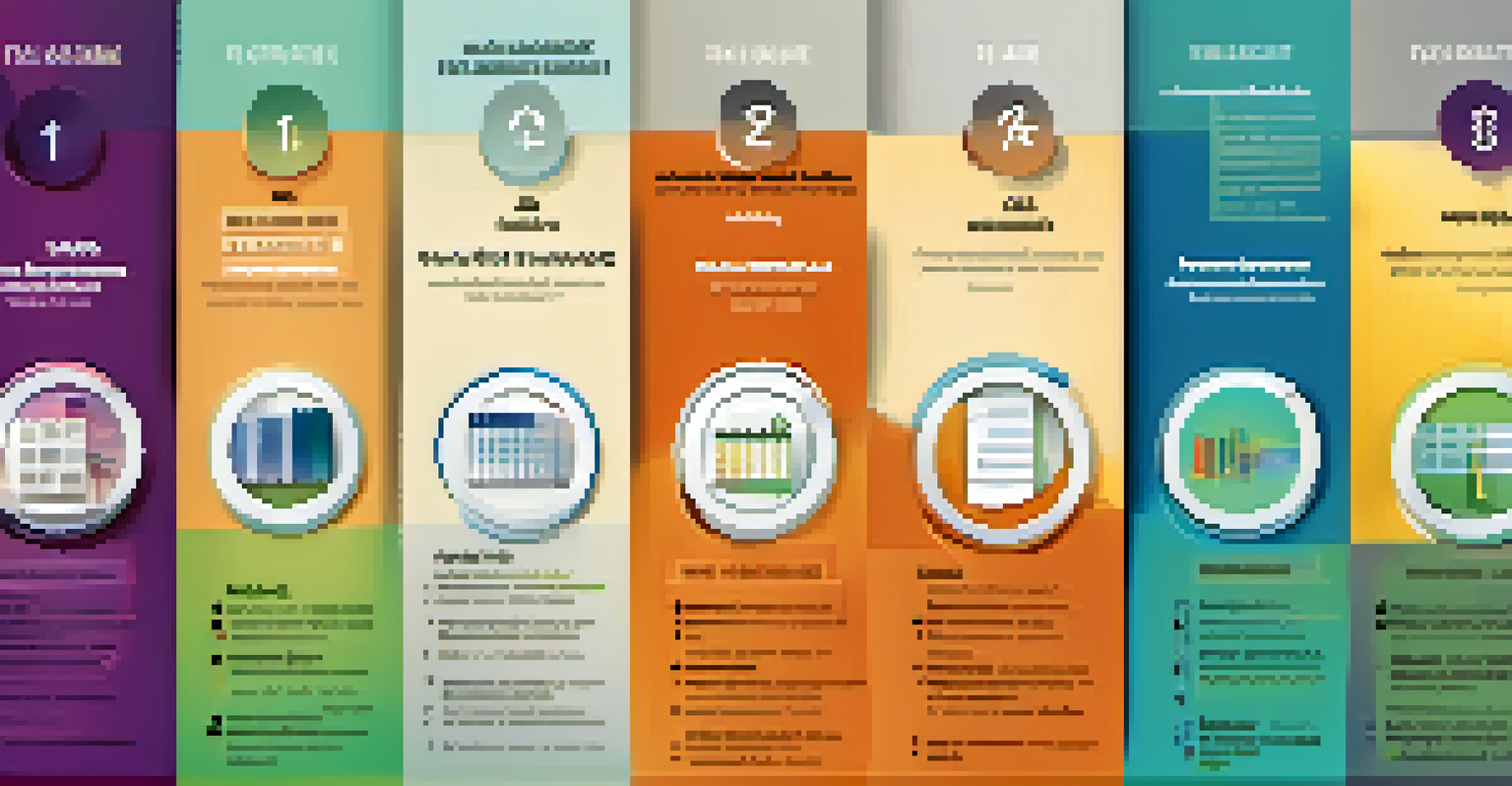Progressive Tax Systems: Understanding Tax Brackets

What Is a Progressive Tax System?
A progressive tax system is designed to tax individuals based on their income levels. This means that higher earners pay a larger percentage of their income in taxes compared to lower earners. The idea behind this system is rooted in fairness, as those who have more financial resources contribute more to the funding of public services.
The hardest thing in the world to understand is the income tax.
For example, if someone earns $30,000 a year, they might fall into a lower tax bracket, while someone earning $150,000 could face a higher bracket. This system helps to reduce income inequality by redistributing wealth to support vital services like education and healthcare. It’s a bit like paying more for a bigger slice of cake, where everyone gets a piece, but those with bigger appetites contribute more.
In summary, progressive tax systems aim to create a balanced approach to taxation that reflects an individual's ability to pay, ensuring that the tax burden is shared more equitably across different income levels.
Understanding Tax Brackets: How They Work
Tax brackets are the thresholds that determine how much tax you'll pay on your income. In a progressive tax system, your income is divided into segments or 'brackets'. Each bracket is taxed at a different rate, meaning you only pay the higher rate on the income that falls within that bracket, not your entire income.

For instance, if the first bracket taxes income up to $10,000 at 10%, and the next bracket applies 20% to income between $10,001 and $40,000, you wouldn’t pay 20% on your entire income if you earned $30,000. Instead, you would pay 10% on the first $10,000 and 20% on the remaining $20,000. This tiered approach prevents financial strain on lower-income earners while ensuring that higher incomes are taxed more heavily.
Progressive Taxes Promote Fairness
A progressive tax system ensures that higher earners contribute a larger percentage of their income, helping to reduce income inequality.
Understanding how tax brackets function can help you better plan your finances and make informed decisions about your income. It’s an essential piece of the puzzle when navigating the complexities of taxes.
The Benefits of a Progressive Tax System
One of the primary benefits of a progressive tax system is that it promotes social equity. By imposing higher tax rates on those who can afford to pay more, it helps to level the playing field for everyone. This is particularly important in societies where wealth disparity can lead to various social issues, including limited access to education and healthcare.
Taxation is just a sophisticated way of demanding money with menaces.
Additionally, progressive taxation can stimulate economic growth. When lower-income individuals pay less in taxes, they typically have more disposable income to spend on goods and services. This spending can drive demand in the economy, creating jobs and opportunities for everyone. Think of it as watering a garden: when you nourish the roots, the entire plant thrives.
Moreover, progressive taxes can also provide essential funding for public services, such as infrastructure and social programs. These services benefit society as a whole, making it a win-win situation.
Challenges of Progressive Tax Systems
While progressive tax systems offer many advantages, they also come with their own set of challenges. One major issue is the potential for tax avoidance and evasion. Higher tax rates can incentivize individuals and corporations to find ways to minimize their tax liability, sometimes through legal loopholes or illegal means.
Furthermore, striking the right balance in tax rates can be tricky. If rates are set too high, it might discourage high earners from working harder or investing in the economy. It’s a delicate dance, akin to balancing a seesaw—too much weight on one side could tip the entire system.
Tax Brackets Simplify Payments
Tax brackets allow individuals to pay different rates on portions of their income, preventing financial strain on lower earners.
Lastly, there’s the challenge of public perception. Some individuals may view progressive taxes as punitive, leading to debates about fairness and the role of government in wealth distribution. Clear communication about the benefits of such systems is vital to maintain public support.
The Role of Deductions and Credits
Deductions and credits play a critical role in how much tax individuals ultimately pay, even within a progressive system. Deductions reduce your taxable income, while credits directly reduce the amount of tax owed. This means that even if you fall into a higher tax bracket, smart use of deductions and credits can significantly lower your tax bill.
For instance, if you have a taxable income of $50,000 and qualify for a $5,000 deduction, your taxable income reduces to $45,000, potentially placing you in a lower tax bracket. Credits can provide even more immediate relief, as they reduce your tax dollar-for-dollar. Imagine it as finding a coupon for your favorite store: you still want the item, but the coupon helps you save money right away.
Understanding how to leverage deductions and credits effectively can empower taxpayers to maximize their financial situation and lessen their tax burden.
Progressive Taxes Around the World
Progressive tax systems are not unique to one specific country; many nations around the globe employ them to varying degrees. For instance, countries like Sweden and Denmark utilize high-income tax rates to fund extensive social welfare programs, while also achieving high levels of income equality. This approach has earned them reputations for strong public services and overall quality of life.
In contrast, other countries may adopt a more moderate progressive tax system that balances taxing higher incomes while maintaining competitive rates to attract investment. For example, Canada has a tiered system that allows for both individual and corporate taxation, aiming to promote growth while ensuring fair contribution from those who can afford it.
Global Adoption of Progressive Tax
Many countries employ progressive tax systems to fund social programs and achieve income equality, demonstrating its versatility across different economies.
These global examples illustrate the flexibility of progressive tax systems and how they can be tailored to fit the unique economic and social needs of each country. It’s a testament to the idea that one size doesn’t fit all when it comes to tax policy.
Future Trends in Progressive Taxation
As societies evolve, so too do their tax systems. Progressive taxation is likely to see further changes as discussions around wealth inequality gain traction. Many experts argue that the current systems need to adapt to account for wealth generated from sources other than traditional income, such as capital gains and inheritances.
There’s also a growing interest in implementing a more robust taxation framework for the wealthiest individuals and large corporations. This could involve introducing new brackets or increasing existing rates to ensure that those who benefit the most from society contribute their fair share. Imagine a community coming together to support a common cause; the more resources one has, the larger their contribution can be.

Ultimately, the future of progressive taxation will hinge on public sentiment and political will, reflecting the values and priorities of society. As we look ahead, it’s crucial to engage in these conversations to shape a fair tax system for all.